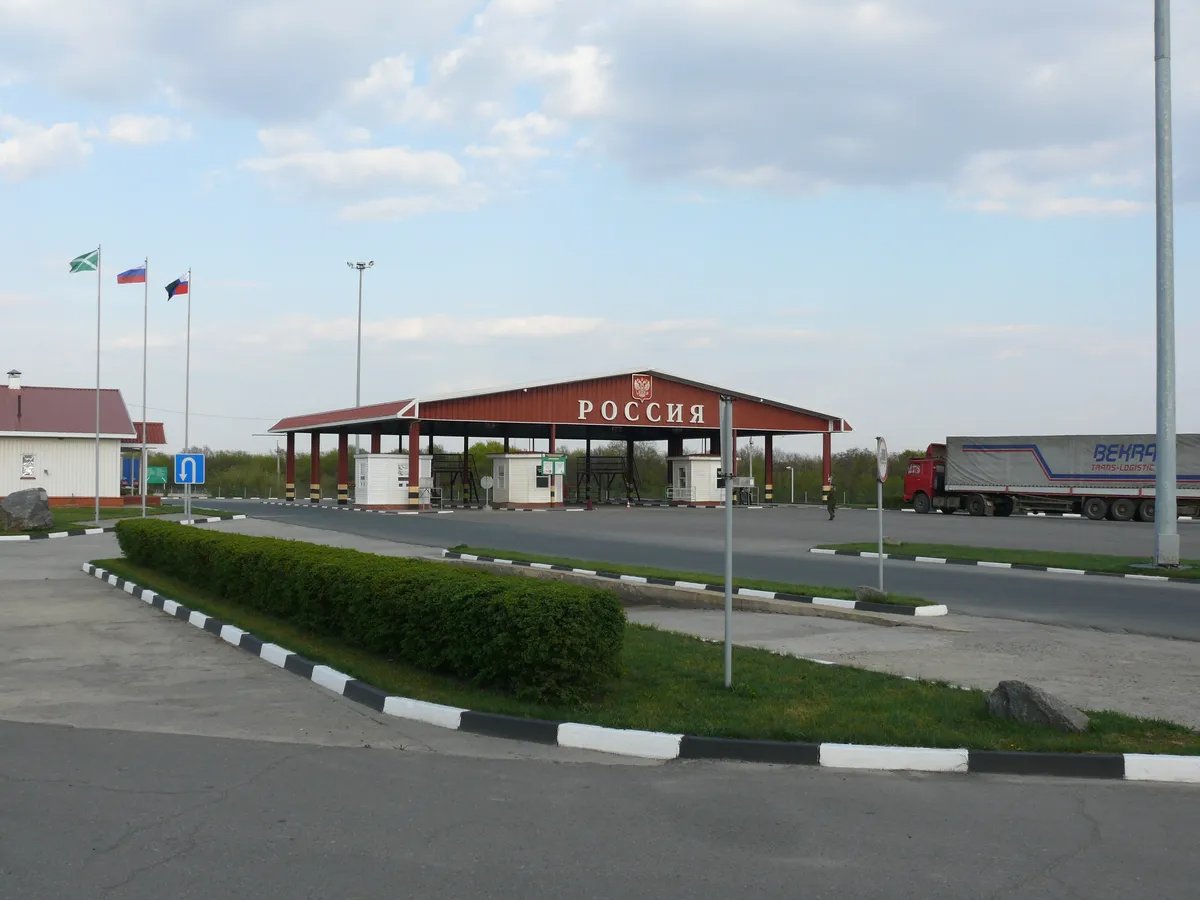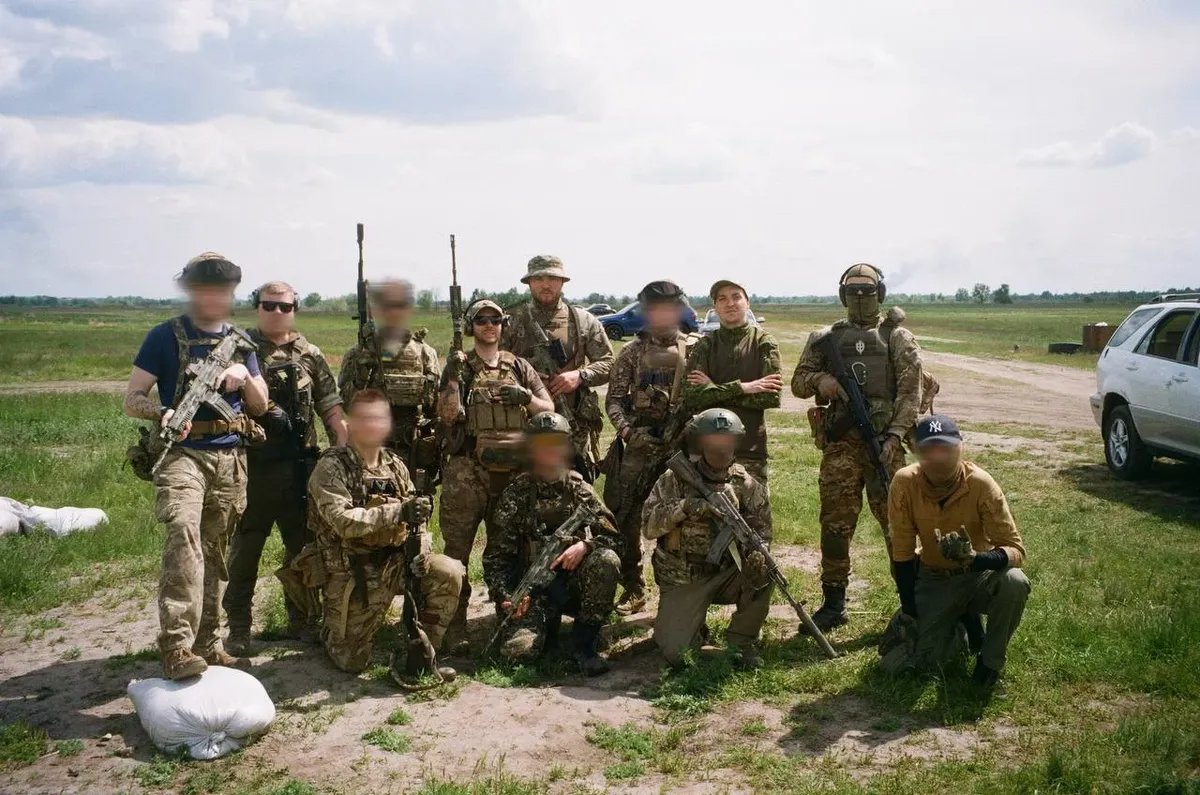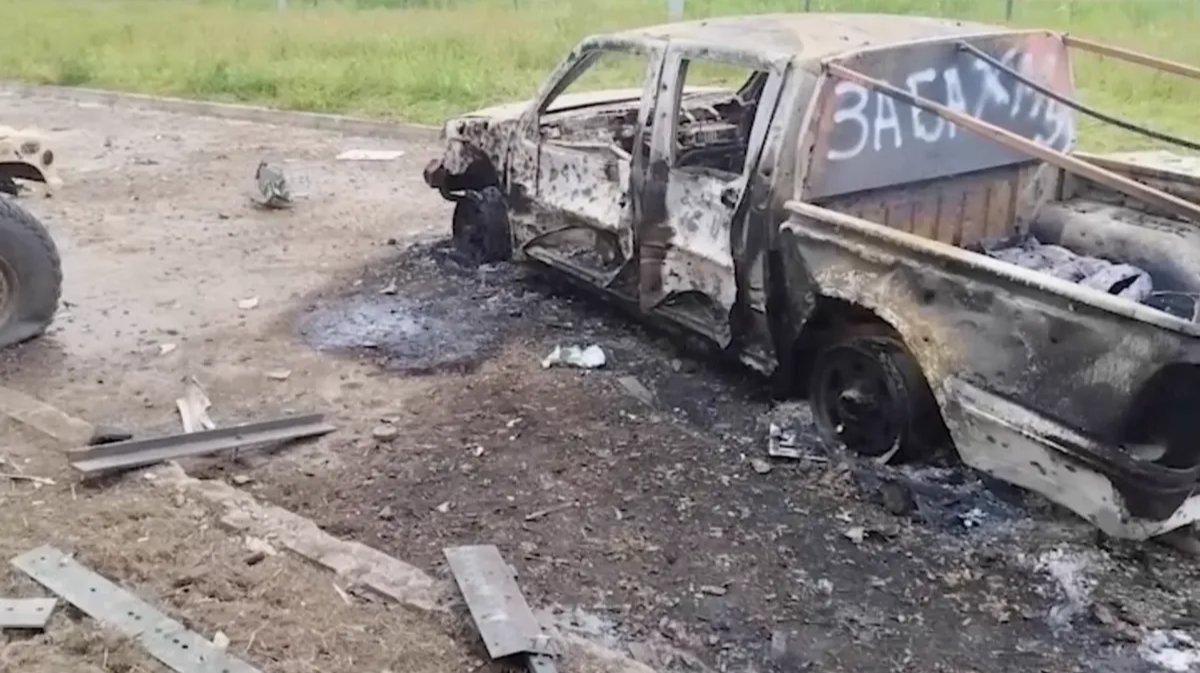In the summer of 2014, I was on assignment in Ukraine and was trying to get back to Russia. Clashes were happening all around me, the Ukrainian army was attempting to cut off the separatists from Russian supply lines. Border checkpoints were not operational. A friend of mine drove me to a small border-adjacent village which is split in half by the state border between Russia and Ukraine lying along a small river. Having crossed a wobbly wooden bridge, I entered Russia. Despite the fighting that was taking place just several kilometres away, Russian border control officers did not even try to reinforce their positions or simply catch perpetrators.
Not trained for this
The length of Russia’s border with Ukraine near the Sumy region is 562.8 km, near the Chernihiv region it is 199 km, and 315.5 km near the Kharkiv region. These stretches of land have now practically turned into a frontline where shelling has become an almost daily occurrence and sabotage and reconnaissance groups sometimes make incursions.
“What do you want from border guards? They are not trained for it, they cannot fight a combined-arms battle with superior enemy forces,”
a source close to the Russian FSB’s border control service tells Novaya-Europe on the condition of anonymity. “The most fearsome weapons that border checkpoints are equipped with are barely working armoured carriers, while there’s no one to simultaneously drive it and man the machine gun. Some units had their drones confiscated to support the war effort. Military police, special services, and special forces are mandated to combat saboteurs. If the enemy uses armoured vehicles, artillery and aviation are required. Meanwhile, border officers are supposed to catch smugglers and stamp passports.”
He also notes that the practice of using locals to guard state borders, which was recently brought up by Russian MP Andrey Kartapolov, dates back to the late days of the Soviet Union. Towards the end of its existence, the fatigued country did not have sufficient resources to properly protect the longest land border in the world. The authorities issued orders that made it possible to engage ordinary citizens living near the border in the state boundary protection efforts.

The Nekhoteyevka vehicle checkpoint, Russia-Ukraine border. Photo: Wikimedia Commons, CC BY-SA 3.0
Later, “the tumultuous nineties” began when there was no real border between Russia and Ukraine. An agreement was in place that allowed anyone to travel across the state boundary practically without any documents. Russian trains heading to the North Caucasus region were travelling through Ukraine.
“Ukrainians were the first to start putting up fences and setting up checkpoints in the mid-2000s,” the source tells Novaya-Europe. “The whole Russian infrastructure until recently stopped at maintaining checkpoints. Border guards sometimes were organising raids against smugglers. There were not enough forces to engage in anything more serious.”
Other experts we interviewed agree with this opinion.
“I am not surprised by what happened. For a long time, we lived in a total relax mode,” retired FSB Major General Alexander Mikhaylov tells Novaya-Europe. “Our forces on this stretch of the boundary line are very limited, while the border control officers don’t have sufficient resources. They don’t have weapons stronger than mortars. Two out of four are regular conscripts or draftees. They are supplied in accordance with peace-time regulations. We did not see Ukraine as a potential enemy in the Soviet times or later. There were checkpoints working there to legally let people in and out. The rest of the territory was a free-for-all area. However, the fighting showed that borders of this and other Russian regions require more effective protection.”
According to the retired FSB general,
the border can be controlled not just with patrols but also with aviation, drones, and other equipment.
Meanwhile, all cases of the sabotage and reconnaissance groups storming into Russia from Ukraine will be analysed by experts. Mikhaylov surmises that the border control service will not be reinforced and those in charge will opt to strengthen the army group stationed near the area and the border officers themselves. To achieve that, forces of the Moscow and other military districts of Russia, which have enough personnel and hardware, can be used.
Impossible to cover it all
“Russia’s problems are objectively clear. It is impossible to seal many hundreds of kilometres of the border that run through well-passable areas with settlements and a network of back roads,” Israeli military expert David Sharp tells Novaya-Europe. “A huge number of personnel and military vehicles is required to securely block these stretches. Moreover, you need headquarters, coordination, detection and reconnaissance equipment, and a lot of forces constantly on high alert. The attacking side has a much easier time than the defenders. Ukrainians can look for Russia’s weaknesses and carefully plan their operations. Kyiv has everything to achieve it: time, resources, and intelligence.”
David Sharp points to the Israeli-Lebanese border as an example: just 130 km of this division line is guarded by elite army forces and border protection service with the use of cutting-edge equipment and technologies which Russia can only dream about. And still, the border is known to have its vulnerabilities and can be breached.
According to the Israeli expert, Russia is having an even worse time than previously thought. He is certain that very few forces are ordered to guard the border, and it’s possible that there’s nobody doing it at some sections. “Russia lacks troops on the frontline,” Sharp says. “The question remains unanswered whether Russia is doing the most with its sparse resources. I suppose that their efficiency is low. We can see a high level of recklessness, poor organisation, and substandard military training.”
“The Russian army has long been operating while experiencing an extreme shortage of trained personnel,” says Sergey Migdal, military expert and former Israeli police and security service officer.
“We see that units made up of people from across the country, from Kaliningrad to the Far East, are used in hot spots.”
“They are barely sufficient to hold on to more than 1,000 km of the frontline. Moreover, a certain number of troops must stay at their military district stations. Meanwhile, the rest of the engagement line, or border, is practically covered by border control officers, the National Guard, and police. They are not trained to even fight saboteurs, let alone heavy military vehicles. They can only selflessly die at the post.”
According to Sergey Migdal, the Russian border service generally ranks very low on the army and security level. He is certain that most stretches of the Russia-Ukraine border still lack the necessary equipment to detect perpetrators and are free to roam. Therefore, it is practically impossible to set up effective defences there.
Counter-offensive signs
“Additional military formations were airlifted on large Mi-26 transport helicopters to Grayvoron,” Migdal continues. “Clearly, there were no forces to repel the attack at the site. One helicopter was reportedly downed and burnt down in a village located near the district centre. The Russian army needed to have several fully-equipped battalions with good knowledge of the area and erected defences near the border to repel the attackers. Fortifications and mine fields alone are of little use. Military engineers clear them up in a single night.”

Russian Volunteer Corps fighters. Photo: Telegram
Migdal believes that similar raids can take place in other Russian regions within the next few weeks or even days. It poses a serious issue for the Russian authorities. This is why Russian President Vladimir Putin refuses to comment on the situation, opting to pretend that nothing happened.
“Logically, Ukraine should keep this pressure up,” Migdal notes. “By using Russian nationals from the Russian Volunteer Corps and the Freedom of Russia Legion or their own special ops forces involved in these formations.”
“If a whole infantry brigade storms the border, it can capture a small town and hold on to it. Moscow will be forced to react then
and redeploy units from the frontline to the areas that were previously considered safe. Considering that resources are finite this will lead to vulnerabilities which can be exposed by Ukraine to launch its long-awaited counter-offensive.”
The expert is certain that these operations are devised by the main office of the Ukrainian intelligence and, so far, they have been a success. Even when Russia’s official media outlets completely ignore what happens, reports are disseminated instantly online and via messengers. The goal is to sow fear, fill up roads with refugees and traffic, and show that settlements are vulnerable. This undertaking has been successful so far. All these efforts are signs that the Ukrainian counter-offensive is coming.
Join us in rebuilding Novaya Gazeta Europe
The Russian government has banned independent media. We were forced to leave our country in order to keep doing our job, telling our readers about what is going on Russia, Ukraine and Europe.
We will continue fighting against warfare and dictatorship. We believe that freedom of speech is the most efficient antidote against tyranny. Support us financially to help us fight for peace and freedom.
By clicking the Support button, you agree to the processing of your personal data.
To cancel a regular donation, please write to [email protected]

